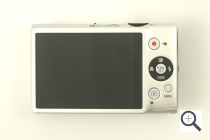There are literally hundreds of different opinions offered in reviews around the internet.But there are a few on which the experts all agree.
The Canon PowerShot S95 has been consistently ranked as the best compact digital under four hundred dollars.It’s noted for its high quality pictures and its impressive low light performance.That makes it great for social occasions when you can quietly click away without the distraction of an annoying flash. It’s got an advanced Smart Auto focus system and can be used in a fully manual mode.This is one that has consistently had the critics smiling.
Also a regular winner in the under four hundred dollar range is the very popular Sony Cybershot DSC-H55. Reviewers praise this for its big 14.1 megapixel sensor and Sony’s renowned BIONZ image processor which makes this camera lighting fast. It’s also got a full range of Sony’s advanced features which make shooting easy. It’s also got a 10x optical zoom and a wide angle lens. This camera is regularly rated as one of the best buys around.
Still in the under four hundred dollar category, Nikon’s Coolpix P7000 is frequently cited as one of the best point and shoot cameras on the market. Nikon has designed it to be compact and portable but built in plenty of features to ensure that you can get really excellent results in a variety of conditions. And if you want to do more than just point and shoot, there’s a full manual override function which lets you shoot exactly the picture you want. And one other great feature here is the ability to use an external flash to get the lighting just right.
Samsung has one of the best reviewed cameras around with its TL500. The specifications here look fairly ordinary, 10 megapixels, a 24mm lens and 3x optical zoom. But what makes this Samsung gem stand out from the crowd is its amazing low light capability. That 24mm lens is matched with a f1.8 aperture which really comes into its own when you don’t want to use a flash. Reviewers have constantly praised the TL500 as the best camera for photographers who want to be able to shoot discreetly in intimate situations with little light.
Another compact which has won consistently good reviews is the Olympus 720SW. This is a great go-anywhere camera. It’s waterproof and shockproof, pocket sized and easy to use. This is an excellent pocket camera for the serious photographer who wants a second camera. It regularly wins points for simple operation and the ease with which you can go from playback to shutter mode. It’s also extremely rugged.
Last but not least among reviewers’ current favourites is the tiny Panasonic DMC TZ20. This little gem has a 16x zoom and can record HD video with stereo sound.
View the original article here
The Canon PowerShot S95 has been consistently ranked as the best compact digital under four hundred dollars.It’s noted for its high quality pictures and its impressive low light performance.That makes it great for social occasions when you can quietly click away without the distraction of an annoying flash. It’s got an advanced Smart Auto focus system and can be used in a fully manual mode.This is one that has consistently had the critics smiling.
Also a regular winner in the under four hundred dollar range is the very popular Sony Cybershot DSC-H55. Reviewers praise this for its big 14.1 megapixel sensor and Sony’s renowned BIONZ image processor which makes this camera lighting fast. It’s also got a full range of Sony’s advanced features which make shooting easy. It’s also got a 10x optical zoom and a wide angle lens. This camera is regularly rated as one of the best buys around.
Still in the under four hundred dollar category, Nikon’s Coolpix P7000 is frequently cited as one of the best point and shoot cameras on the market. Nikon has designed it to be compact and portable but built in plenty of features to ensure that you can get really excellent results in a variety of conditions. And if you want to do more than just point and shoot, there’s a full manual override function which lets you shoot exactly the picture you want. And one other great feature here is the ability to use an external flash to get the lighting just right.
Samsung has one of the best reviewed cameras around with its TL500. The specifications here look fairly ordinary, 10 megapixels, a 24mm lens and 3x optical zoom. But what makes this Samsung gem stand out from the crowd is its amazing low light capability. That 24mm lens is matched with a f1.8 aperture which really comes into its own when you don’t want to use a flash. Reviewers have constantly praised the TL500 as the best camera for photographers who want to be able to shoot discreetly in intimate situations with little light.
Another compact which has won consistently good reviews is the Olympus 720SW. This is a great go-anywhere camera. It’s waterproof and shockproof, pocket sized and easy to use. This is an excellent pocket camera for the serious photographer who wants a second camera. It regularly wins points for simple operation and the ease with which you can go from playback to shutter mode. It’s also extremely rugged.
Last but not least among reviewers’ current favourites is the tiny Panasonic DMC TZ20. This little gem has a 16x zoom and can record HD video with stereo sound.
View the original article here
















































